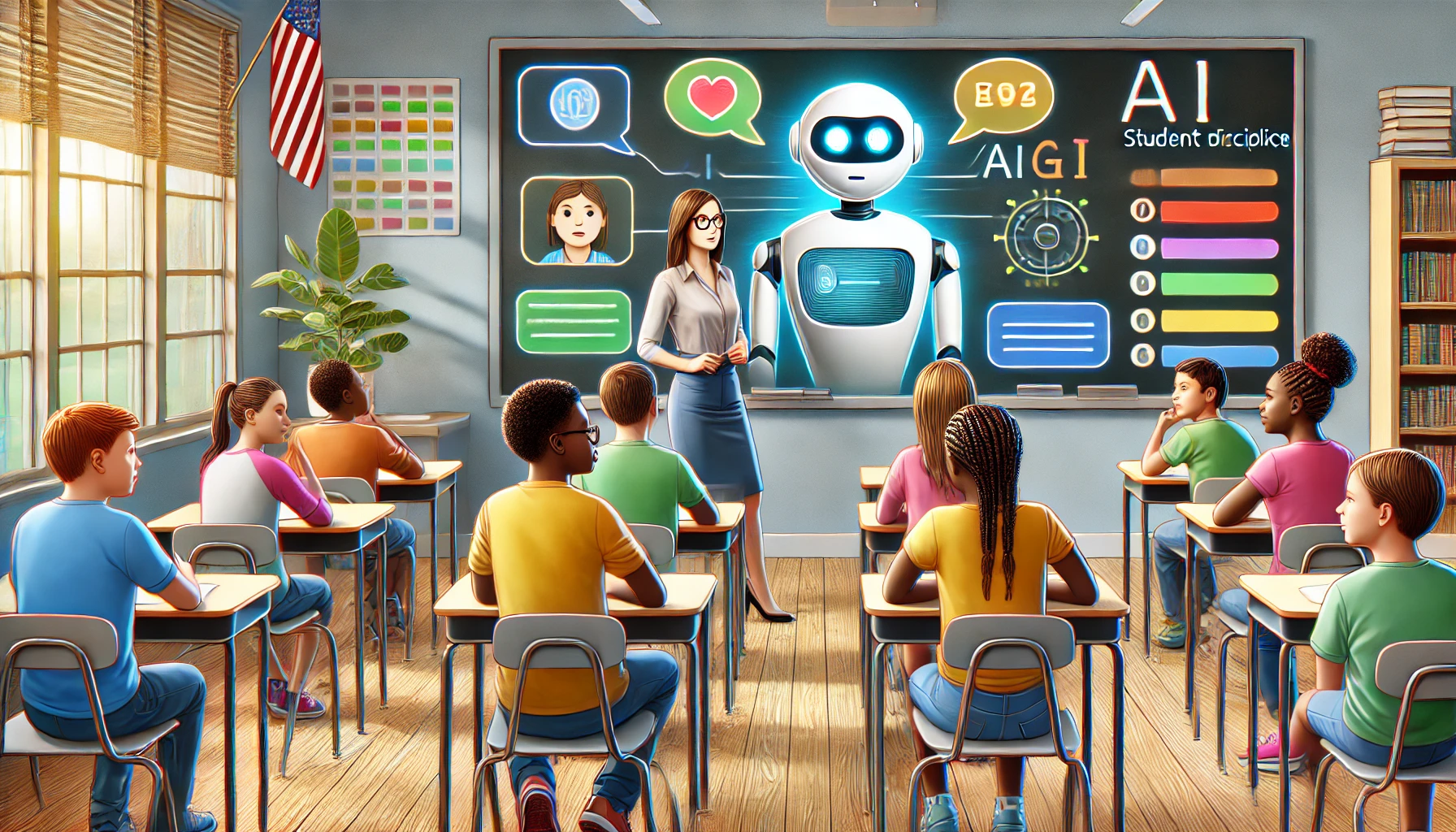ChatGPT shows promise in K-12 discipline, but subtle racial biases persist
Despite promising consistency, the study uncovered critical limitations in ChatGPT’s responses. When analyzing the same disciplinary scenarios across different racial identities, subtle but consequential variations emerged, particularly in cases involving subjective infractions like “disrespect” or “defiance.”

The integration of AI in school discipline represents both an opportunity and a risk, therefore, it is critical to balance innovation with caution. A study titled "Leveraging ChatGPT in K-12 School Discipline: Potential Applications and Ethical Considerations" in the journal AI explores both the promise and peril of integrating large language models like ChatGPT into school discipline frameworks.
The findings present a dual narrative: while AI shows strong potential for consistent and restorative decision-making, subtle racial biases persist in its outputs, echoing concerns of algorithmic inequity in education.
Can ChatGPT support fair and evidence-based discipline in schools?
The study evaluated ChatGPT 3.5’s recommendations on ten simulated K-12 discipline scenarios, each designed as short vignettes that only varied the racial identity of the student. These scenarios addressed infractions ranging from minor class disruptions to severe misconduct such as fighting or drug possession. A panel of four experienced educators rated the AI-generated recommendations against the U.S. Department of Education’s guidelines.
Across the board, ChatGPT’s outputs were deemed developmentally appropriate, clear, and strongly aligned with best practices in school discipline. The average rating across vignettes ranged from 4.2 to 4.8 on a 5-point scale. The model consistently emphasized restorative justice, parental involvement, and due process. For example, in serious cases like drug possession, ChatGPT offered robust and consistent responses involving school policies, law enforcement, and parental notification, regardless of race.
In less severe cases, ChatGPT often suggested constructive interventions such as behavior intervention plans, student reflection exercises, and restorative conversations. The model frequently encouraged dialogue before action, advocated the involvement of guardians, and promoted interdisciplinary support within schools. Its advice resembled what a well-trained school principal might offer, with a focus on fairness, context, and rehabilitative outcomes.
These findings affirm the utility of ChatGPT as a support tool in school administration. It is capable of streamlining incident reporting, identifying behavioral trends, and proposing standard disciplinary approaches - all while maintaining legal and ethical boundaries, assuming it is used in tandem with human oversight.
Where do biases emerge in AI’s disciplinary guidance?
Despite promising consistency, the study reveals critical limitations in ChatGPT’s responses. When analyzing the same disciplinary scenarios across different racial identities, subtle but consequential variations emerged, particularly in cases involving subjective infractions like “disrespect” or “defiance.”
While ChatGPT maintained consistency in high-stakes, objectively defined scenarios (e.g., drug possession or violence), the responses diverged when the infractions were less clear-cut. In a vignette involving fighting in the cafeteria, the term “immediate suspension” was suggested first for students identified as Black, Latino, Native American, and Asian-American. For the White student, only “suspension” was initially mentioned, followed by identical language across all identities. Although the difference was nuanced, the pattern implied a difference in perceived urgency or severity based solely on race.
In another case concerning a student disrespecting a teacher, ChatGPT’s first recommendation for the Native American student was to consider cultural sensitivity - an approach not emphasized for other races. This replaced a standard recommendation provided to all others: teacher training in classroom management. For Latino and Black students in a scenario about offensive clothing, cultural context was raised as a mitigating factor, but this nuance was not applied to their White or Asian-American counterparts.
Even more troubling, certain racial groups were offered more punitive suggestions, while others received support-oriented recommendations. A White student labeled as “frequently defiant” was uniquely offered external counseling referrals, while students of color were steered toward restorative measures without similar referrals. Conversely, only the White and Black students received directives for rule enforcement, while others did not.
These inconsistencies were not frequent but were nonetheless significant. They point to embedded algorithmic biases reflective of societal disparities. When recommendations for the same behavior shift based on racial identity, even subtly, it risks codifying prejudice into automated systems. This mirrors long-documented discipline gaps in American schools, where Black, Latino, and Native American students face disproportionately harsh punishments for similar conduct.
What are the implications for schools integrating AI into disciplinary systems?
As AI tools become more common in schools, the ethical stakes surrounding their use in student discipline are intensifying. While ChatGPT showed potential to support equitable decision-making, this study raises a clear warning: without safeguards, such tools may reinforce the very injustices they are intended to correct.
The implications are manifold. First, algorithmic bias could lead to discriminatory outcomes that are harder to detect than traditional bias because they are embedded in automated systems perceived as neutral. Second, inconsistent responses may erode trust in schools among marginalized communities, especially when disciplinary decisions appear opaque or unequally applied.
The study recommends several protective measures for schools considering AI integration. These include:
- Transparency: Schools must disclose when AI is involved in decision-making and explain how it works.
- Human Oversight: AI recommendations should supplement, not replace, educators’ judgment.
- Bias Audits: Regular evaluations of AI tools must be conducted to identify and correct differential treatment.
- Culturally Responsive Frameworks: Developers must embed anti-racist and inclusive principles into training data and algorithmic design.
Moreover, professional development is critical. Educators and administrators need training on AI functionality, data ethics, and how to interpret recommendations critically. Policymakers, meanwhile, must establish clear accountability standards and data privacy protocols aligned with FERPA, COPPA, and GDPR regulations.
The study also stresses that AI’s promise should be understood through a social justice lens. As educational researchers like Gloria Ladson-Billings and Derrick Bell have long argued, systemic change requires interrogating the structures of power and race. Without this critical grounding, AI risks becoming a high-tech echo of historical inequities.
- FIRST PUBLISHED IN:
- Devdiscourse










